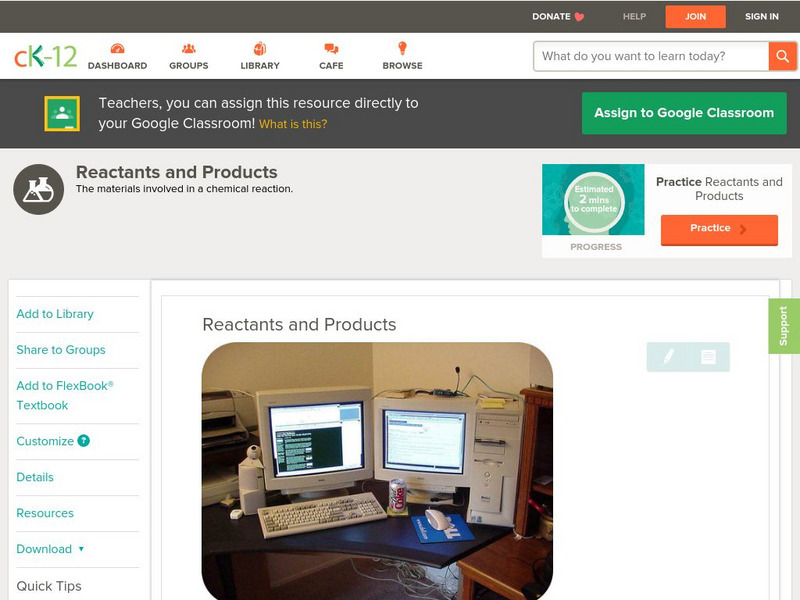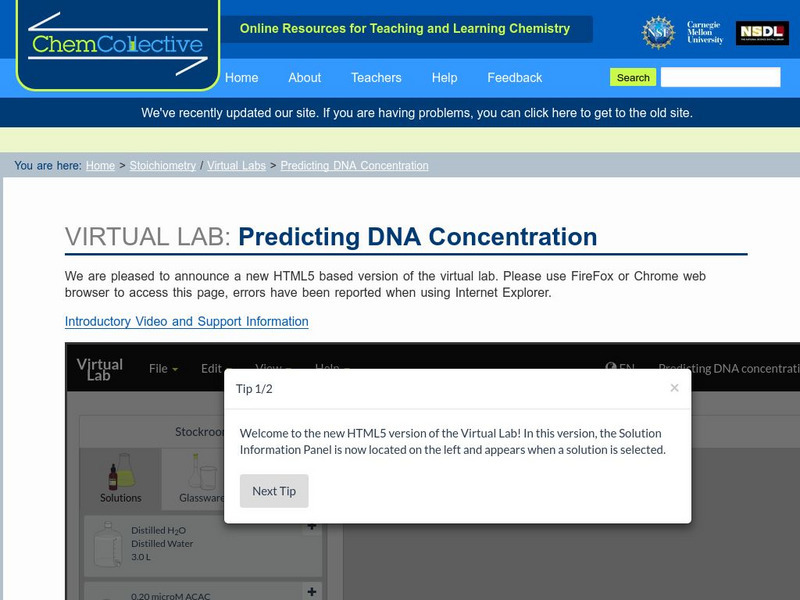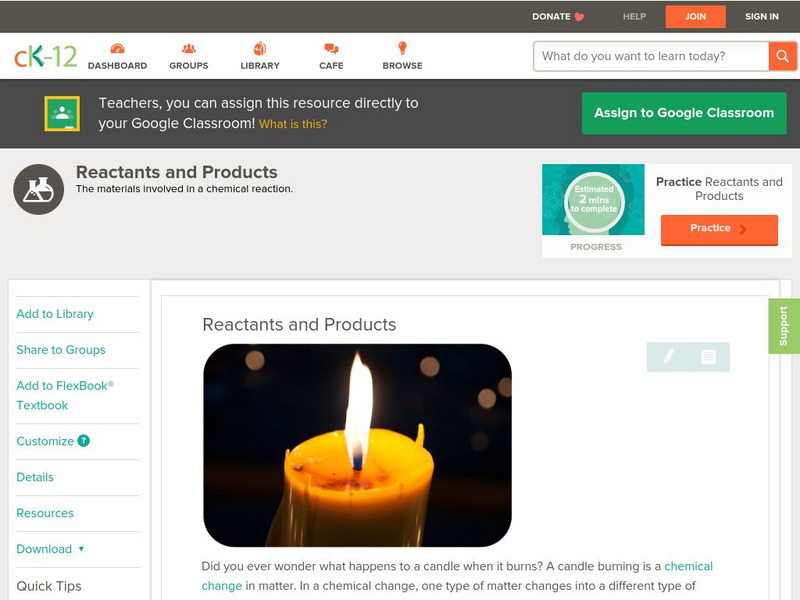Nuffield Foundation
Working with Immobilized Enzymes or Microscopic Organisms
Let the lab be a catalyst to learn about enzymes. Scholars create alginate beads filled with yeast. As part of an investigation into enzymes, they see how these beads provide a catalyst to the reaction of glucose into ethanol.
Santa Monica College
The Composition of Potassium Chlorate
The third lesson in a series of 11 begins by using thermal decomposition of potassium chlorate to determine the mass percent of oxygen. Then a second activity allows scholars to demonstrate that the resulting residue is from a...
Curated OER
Identifying Reaction Types
In this reactions activity, students are given nine chemical reactions to identify as single replacement, double replacement, synthesis or decomposition reactions.
Curated OER
Chemiluminescence
Students explore chemiluminescence through various experiments. In this chemistry instructional activity, students explain the chemical reaction that drives the process. They give real life applications of chemiluminescence.
Curated OER
The Rates of Chemical Reactions
In this chemistry activity, students select answers to 8 multiple choice questions from the drop down box. They identify the factors affecting rates of chemical reactions.
Curated OER
H2O2 Decomposition Lab II
Students conduct an oxidation experiment in which they must determine how much hydrogen peroxide (H2O2) is actually in a store-bought solution of H2O2.
Curated OER
Equilibrium
In this equilibrium instructional activity, students determine the effect of adding or subtracting items from a reaction. Students determine the equilibrium constant for given reactions. This instructional activity has 13 problems to solve.
Curated OER
Collisions Drive Reactions
In this reactions activity, high schoolers determine what must take place in order for a reaction to occur. Students complete 6 short answer questions.
Curated OER
Equilibrium Constant
In this equilibrium constant worksheet, students show the balanced reaction for given reactions. Students write the equilibrium expression for the reactions. Students apply the Le Chatelier's Principle. This worksheet has 37 problems to...
Curated OER
Le Chatelier's Principle
In this chemical reaction instructional activity, students apply Le Chatelier's Principle to explain how the given changes in reaction conditions will affect the position of equilibrium. This instructional activity has 6 problems to solve.
Curated OER
Activity #18 Decompostion of Baking Soda
Middle schoolers observe what occurs as baking soda is heated. They explain why a chemical rather than a physical change occurred during the procedure. Pupils identify the tpe of reaction (decomposition). Students conduct a glowing...
Curated OER
Combustion Reactions
Students write a balanced chemical reaction. They articulate how burning fossil fuels increase the carbon dioxide levels in the atmosphere. Students incorporate all the environmental risks involved as well.
Curated OER
Metabolism Test Review
In this metabolism test review, learners define several terms. Students write balanced chemical equations for aerobic cellular respiration. Learners complete several multiple choice questions.
Curated OER
Determination of a Rate Law
Students determine the rate law for a chemical reaction. They use graphical techniques in the analysis of experimental data.
Curated OER
RP Word Search Puzzle
In this literacy worksheet, students find the words that are related to the concepts that are the theme of the word search. New vocabulary is the focus of the puzzle.
University of Colorado
University of Colorado: Ph Et Interactive Simulations: Reactants, Products and Leftovers
An interactive simulation that teaches about chemical reactions and limiting reactants by creating sandwiches to represent chemical reactions. See how many can be made using different amounts of reactants. This simulation can either be...
CK-12 Foundation
Ck 12: Connecting Cellular Respiration and Photosynthesis
[Free Registration/Login may be required to access all resource tools.] How do trees help you breathe? This activity covers the connection between cellular respiration and photosynthesis and identifies the products and reactants of each.
Chemistry Collective
Chem Collective: Determining Reactants and Products in a Solution of Dna
In this limiting reagents problem, students are given specific concentrations of DNA solutions and are asked to predict what products and reactants will remain after a specific volumes are mixed and reaction has occurred.
CK-12 Foundation
Ck 12: Chemistry: Reactants and Products
[Free Registration/Login may be required to access all resource tools.] Defines reactant, product, and chemical equation.
Chemistry Collective
Chem Collective: Predicting Dna Concentration
In this limiting reagents problem, students are given specific concentrations of DNA solutions and are asked to predict what products and reactants will remain after a specific volumes are mixed and reaction has occurred.
Concord Consortium
Concord Consortium: Chemical Reactions and Stoichiometry
In this activity, students explore reactions in which chemical bonds are formed and broken. Students experiment with changing the temperature and the concentration of the atoms in order to see how these affect reaction rates. They also...
University of Colorado
University of Colorado: Ph Et Interactive Simulations: Reactants, Products, Leftovers
Explore the analogy of sandwich making with several ingredients and see if anything is left over. Then do the same thing with reactants in a chemical reaction, to see how many different products can be made. Afterwards, play a game with...
CK-12 Foundation
Ck 12: Physical Science: Reactants and Products
[Free Registration/Login may be required to access all resource tools.] Reactants and products in chemical reactions and the relationship between reactants and products.
Sophia Learning
Sophia: Limiting Reactant Identifying
Watch this tutorial, and learn how to identify the limiting reactant in a chemical reaction. [7:04]























